
Communication Tools: instant messaging, video conferencing, file sharing
Effective communication tools are essential for modern collaboration, encompassing instant messaging, video conferencing, and file…
Handheld software solutions are designed to boost productivity and streamline operations by delivering essential tools directly to mobile devices. These solutions encompass various applications, including customer relationship management (CRM) systems and accounting software, all optimized for on-the-go use. By prioritizing features like usability, integration, and offline functionality, businesses can enhance decision-making and task management in diverse work environments.
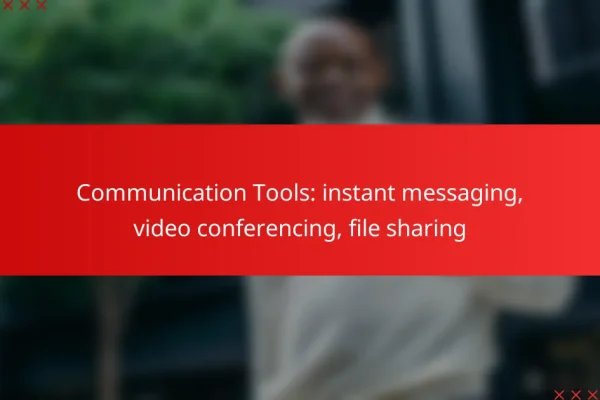
Effective communication tools are essential for modern collaboration, encompassing instant messaging, video conferencing, and file sharing. Instant messaging platforms like Slack and Microsoft Teams streamline team communication, while video conferencing tools enhance remote interactions through real-time visual engagement. Additionally, choosing the right file sharing solutions ensures secure and efficient collaboration on documents and projects. What…
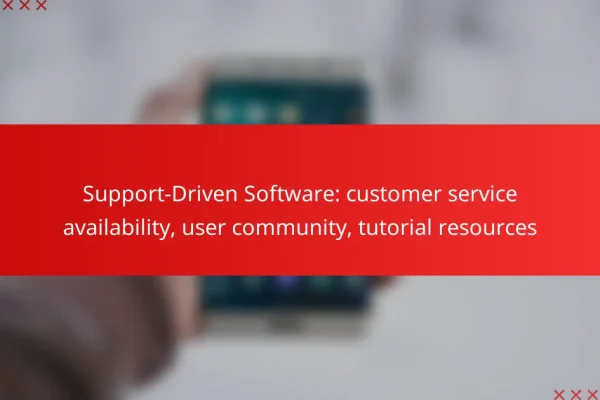
Support-driven software prioritizes customer assistance by offering multiple service options, such as 24/7 live chat, email, and phone support, to meet diverse user needs. Additionally, users can engage with a vibrant community through online forums and social media groups, facilitating knowledge sharing and problem-solving. To enhance user experience, a range of tutorial resources, including video…
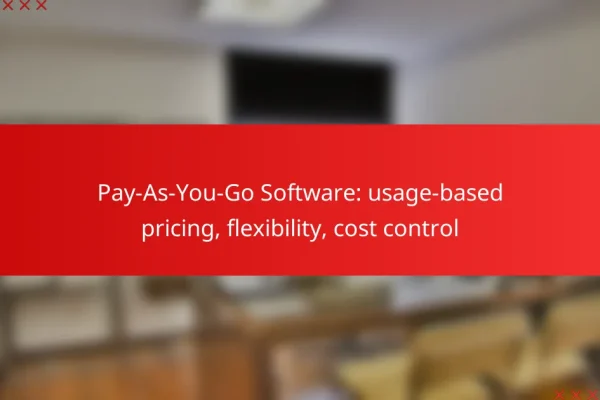
Pay-As-You-Go software employs a usage-based pricing model, enabling users to pay solely for the services they consume. This flexible approach not only enhances cost control but also minimizes financial risk, making it an appealing choice for businesses aiming to manage their software expenses effectively. How does Pay-As-You-Go Software work in the US? Pay-As-You-Go software in…
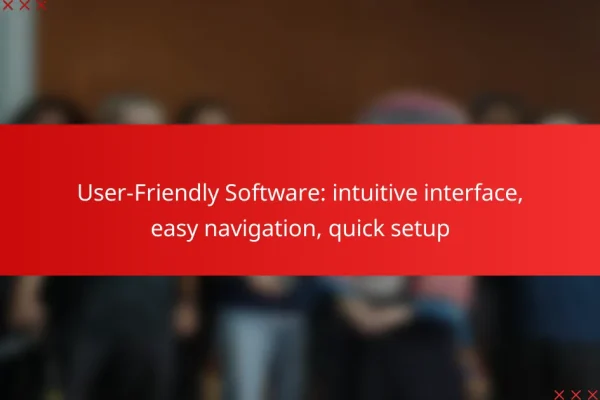
User-friendly software is characterized by its intuitive interface, easy navigation, and quick setup, making it accessible for users of all skill levels. With a focus on minimizing confusion, these tools allow individuals to engage with the application effortlessly, enhancing overall productivity. Features like clear menu structures and effective search functionality further streamline the user experience,…

Trial-based software options offer users a limited-time opportunity to explore various tools, enabling them to assess features before making a financial commitment. These trials typically come with restrictions on functionality and duration, which are crucial for users to understand. By allowing potential customers to experience a product risk-free, trial periods can significantly boost conversion rates…
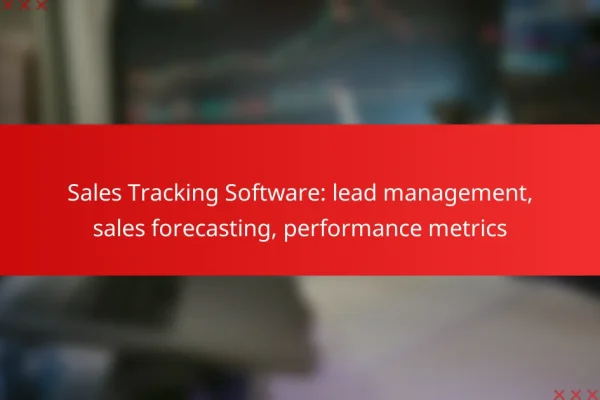
Sales tracking software is essential for modern businesses, offering streamlined lead management, enhanced sales forecasting, and insightful performance metrics. By effectively capturing and nurturing leads, these tools enable sales teams to prioritize opportunities and improve conversion rates. Additionally, advanced features like predictive analytics empower teams to make informed decisions based on historical data and current…
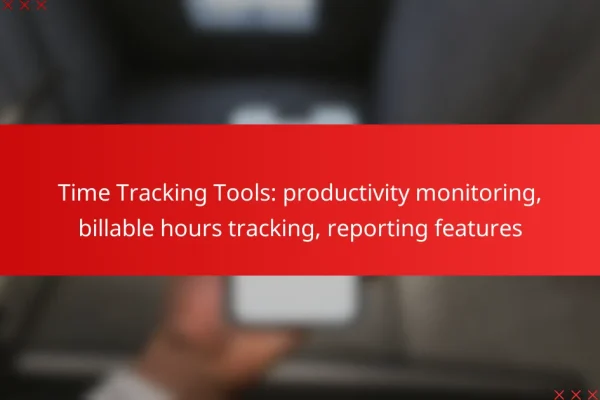
Time tracking tools are essential for enhancing productivity by allowing individuals and teams to monitor how their time is allocated across various tasks. These tools not only facilitate accurate tracking of billable hours but also provide robust reporting features that help analyze productivity trends and optimize project management. What are the best time tracking tools…
The best handheld software solutions for businesses enhance productivity and streamline operations by providing essential tools on mobile devices. Key options include customer relationship management (CRM) systems, accounting software, and sales platforms that are optimized for handheld use.
Salesforce Mobile offers a robust CRM solution that allows businesses to manage customer relationships directly from their handheld devices. Users can access real-time data, update records, and communicate with clients on the go, making it ideal for sales teams.
Consider the app's customization options, which let businesses tailor the interface to their specific needs. Salesforce Mobile integrates seamlessly with other Salesforce products, ensuring a cohesive experience across platforms.
Zoho CRM provides a comprehensive mobile application designed for managing customer interactions and sales processes. It features lead management, sales automation, and analytics, all accessible from a smartphone or tablet.
This solution is particularly appealing for small to medium-sized businesses due to its affordability and scalability. Zoho CRM also offers offline capabilities, allowing users to work without an internet connection, which is beneficial for field sales representatives.
Microsoft Dynamics 365 is a versatile platform that combines CRM and enterprise resource planning (ERP) functionalities. The mobile app enables users to manage sales, customer service, and operations from their handheld devices.
Businesses should consider the integration with other Microsoft products, such as Office 365, which enhances collaboration and productivity. The app supports customization, allowing users to create dashboards that fit their specific business metrics.
The HubSpot Mobile App is designed for marketing, sales, and customer service teams, providing access to CRM tools and analytics on the go. Users can track leads, manage contacts, and monitor marketing campaigns directly from their mobile devices.
One of the strengths of HubSpot is its user-friendly interface and the availability of free tools, making it accessible for startups and small businesses. The app also offers notifications and reminders, ensuring that important tasks are not overlooked.
QuickBooks Online is a widely used accounting software that offers a mobile app for managing finances from anywhere. Users can track expenses, send invoices, and view financial reports, making it essential for business owners and accountants.
This solution is particularly useful for small businesses due to its straightforward setup and user-friendly design. QuickBooks Online also supports integrations with various payment processors, enhancing the overall financial management experience.
Handheld software solutions enhance productivity by providing users with immediate access to critical information and tools on-the-go. This capability allows for quicker decision-making and more efficient task management in various work environments.
Real-time data access enables employees to retrieve and input information instantly, which is crucial for maintaining workflow efficiency. For instance, field technicians can check inventory levels or customer records while on-site, reducing delays associated with returning to the office.
Consider implementing cloud-based systems that sync data across devices. This ensures that all team members have the latest information, minimizing errors and improving collaboration.
Handheld software solutions facilitate streamlined communication by integrating messaging and collaboration tools directly into the workflow. Employees can quickly share updates, ask questions, or provide feedback without needing to switch between multiple applications.
Utilizing platforms that support push notifications can keep team members informed in real-time. This immediacy helps in addressing issues as they arise, fostering a more responsive work environment.
Task automation through handheld software reduces manual effort and the potential for human error. Routine tasks such as data entry, scheduling, and reporting can be automated, allowing employees to focus on more strategic activities.
When selecting automation tools, look for those that can integrate with existing systems to maximize efficiency. Regularly review automated processes to ensure they remain effective and adjust them as necessary to meet evolving business needs.
When selecting handheld software solutions, prioritize features that enhance usability, integration, and functionality. Key aspects include a user-friendly interface, strong integration capabilities, offline functionality, and customizable dashboards to meet specific business needs.
A user-friendly interface is crucial for ensuring that users can navigate the software easily and efficiently. Look for intuitive designs that minimize the learning curve, allowing users to quickly adapt to the system. Features like clear icons, simple menus, and responsive layouts can significantly enhance user experience.
Consider testing the software with actual users to gather feedback on usability. A well-designed interface can lead to higher productivity and lower training costs, making it a vital feature in handheld software solutions.
Integration capabilities allow handheld software to connect seamlessly with other systems, such as inventory management or customer relationship management (CRM) tools. This feature is essential for streamlining operations and ensuring data consistency across platforms. Look for solutions that support popular APIs and data formats.
Evaluate the ease of integration with existing systems, as complex setups can lead to increased costs and implementation time. A solution that offers pre-built integrations with widely used software can save significant effort and resources.
Offline functionality is important for users who may not always have reliable internet access. Handheld software that can operate without a connection allows for uninterrupted work in various environments, such as remote locations or during travel. Ensure the software can sync data once connectivity is restored.
Consider the extent of offline capabilities, such as data entry, reporting, and access to essential features. This flexibility can enhance productivity and reduce frustration for users in the field.
Customizable dashboards enable users to tailor their interface to display the most relevant information and metrics. This feature allows for a more personalized experience, helping users focus on what matters most to their specific roles. Look for solutions that offer drag-and-drop functionality for easy customization.
Evaluate the types of data that can be displayed and how easily users can modify their dashboards. A well-designed dashboard can improve decision-making and efficiency by providing quick access to critical insights and performance indicators.
Handheld software solutions typically offer various pricing models to accommodate different user needs and budgets. The most common models include subscription-based pricing, one-time purchase options, and freemium models, each with distinct advantages and considerations.
Subscription-based pricing involves users paying a recurring fee, often monthly or annually, to access the software. This model provides continuous updates and support, making it ideal for businesses that require the latest features and security enhancements.
Costs can vary widely, generally ranging from $5 to $50 per month per user, depending on the software's complexity and the level of service provided. It's essential to evaluate whether the ongoing costs align with your budget and usage needs.
One-time purchase options allow users to pay a single fee to own the software indefinitely. This model is often appealing for users who prefer not to deal with recurring payments and want full control over their software version.
Prices for one-time purchases can range from $50 to several hundred dollars. However, users should consider that this model may not include future updates or support, which could lead to additional costs down the line for upgrades or troubleshooting.
Freemium models offer basic software access for free, with the option to upgrade to a paid version for advanced features. This approach allows users to test the software before committing financially, making it a low-risk option for many.
While the free version may be sufficient for casual users, businesses often find that they need the premium features, which can range from $10 to $100 per month. It's crucial to assess whether the free version meets your needs or if the paid features justify the expense.